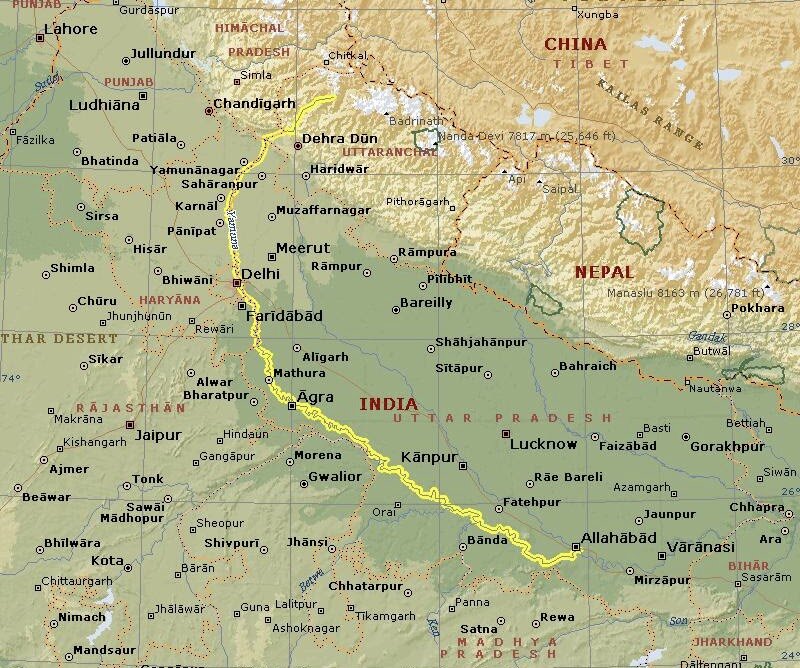Biodiversity & Environment
Yamuna’s High Ammonia Level
- 31 Dec 2020
- 4 min read
Why in News
High levels of ammonia in Yamuna is resulting in frequent disruption to Delhi’s water supply.
Key Points
- Recently, ammonia levels shot up to 7.3 parts per million (ppm) at some places.
- When the concentration rises beyond the Delhi Jal Board’s (DJB’s) treatment capacity of 0.9 ppm, water production has to be stopped or reduced in water treatment plants.
- As per the Bureau of Indian Standards (BIS), the acceptable maximum limit of ammonia in drinking water is 0.5 ppm.
- Causes of Pollution in Yamuna:
- Industrial Pollution:
- The Yamuna flows into Delhi from Haryana and the state has industrial units in Sonipat (on the banks of Yamuna). Ammonia is used as an industrial chemical in the production of fertilisers, plastics and dyes.
- Mixing of drains:
- Mixing of two drains carrying drinking water and sewage or industrial waste, or both, in Sonipat. The two drains often mix due to overflow or damage to the wall that separates them.
- Industrial Pollution:
- Effects of Rising Ammonia:
- Ammonia reduces the amount of oxygen in water as it is transformed to oxidised forms of nitrogen. Hence, it also increases Biochemical oxygen demand (BOD).
- Water pollution by organic wastes is measured in terms of BOD.
- If the concentration of ammonia in water is above 1 ppm, it is toxic to fishes.
- In humans, long term ingestion of water having ammonia levels of 1 ppm or above may cause damage to internal organs.
- Ammonia reduces the amount of oxygen in water as it is transformed to oxidised forms of nitrogen. Hence, it also increases Biochemical oxygen demand (BOD).
- Solution:
- Ozone-based units to treat ammonia levels up to 4 ppm should be installed at Water Treatment Plants.
- The laying of a conduit pipeline to separate drain carrying potable water and sewage water.
- The National Green Tribunal-appointed Yamuna Monitoring Committee has also said that fast-track approvals should be given to build a conduit.
- The Committee had also recommended to the Ministry of Jal Shakti earlier this year to rework the 1994 water sharing pact between Uttarakhand, Himachal Pradesh, Haryana, Delhi and UP to revive the river by releasing more fresh water into it.
Ammonia
- Its chemical formula is NH3.
- It is a colourless gas and is used as an industrial chemical in the production of fertilisers, plastics, synthetic fibres, dyes and other products.
- It occurs naturally in the environment from the breakdown of organic waste matter, and may also find its way to ground and surface water sources through industrial effluents, contamination by sewage or through agricultural runoff.
Yamuna
- The river Yamuna, a major tributary of river Ganges, originates from the Yamunotri glacier near Bandarpoonch peaks in the Mussoorie range of the lower Himalayas in Uttarkashi district of Uttarakhand.
- It meets the Ganges at the Sangam in Prayagraj, Uttar Pradesh after flowing through Uttarakhand, Himachal Pradesh, Haryana and Delhi.
- Length: 1376 km
- Important Dam: Lakhwar-Vyasi Dam (Uttarakhand), Tajewala Barrage Dam (Haryana) etc.
- Important Tributaries: Chambal, Sindh, Betwa, Ken, Tons, Hindon.







